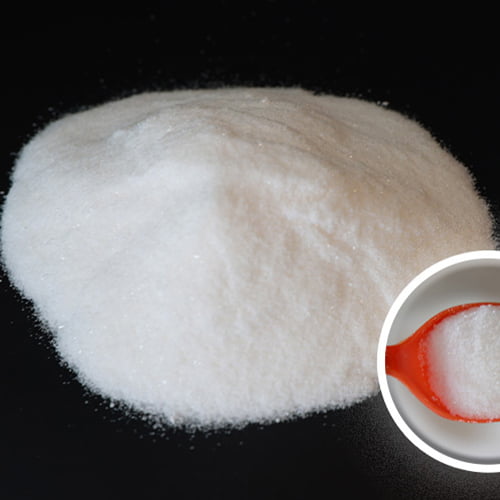Введение
In the realm of firefighting, choosing the right fire suppression agent is crucial to effectively control and extinguish fires, especially in high-risk environments. Sodium formate foam has emerged as a highly effective firefighting solution, offering unique advantages over traditional firefighting foams. This comprehensive guide explores why sodium formate foam is ideal for firefighting applications, examining its properties, benefits, and the scenarios in which it excels.
Understanding Sodium Formate Foam

What is Sodium Formate Foam?
Sodium formate foam is a specialized fire suppression foam that utilizes sodium formate as its primary active ingredient. Sodium formate is a salt of formic acid and is known for its ability to break down fire-causing hydrocarbons. This foam is designed to smother fires by creating a thick, stable blanket that prevents oxygen from reaching the flames, thereby extinguishing the fire.
Key Properties of Sodium Formate Foam
- High Stability: Sodium formate foam is known for its stability, even in high-temperature environments. This stability ensures that the foam remains effective over an extended period, providing continued fire suppression even in challenging conditions.
- Rapid Knockdown: One of the standout features of sodium formate foam is its ability to rapidly knock down fires. The foam quickly spreads over the surface of the fire, cutting off the oxygen supply and reducing the fire’s intensity almost immediately.
- Биоразлагаемость: Unlike some traditional firefighting foams, sodium formate foam is biodegradable, making it an environmentally friendly option for fire suppression. It breaks down into non-toxic components, minimizing the impact on the environment.
- Compatibility with Other Agents: Sodium formate foam can be used in conjunction with other firefighting agents, enhancing its versatility and effectiveness in various firefighting scenarios.
How Sodium Formate Foam Works
Sodium formate foam works through a combination of physical and chemical mechanisms. When applied to a fire, the foam forms a thick layer that covers the fuel surface. This layer serves two main purposes: it prevents oxygen from reaching the fuel, which is necessary for combustion, and it cools the fuel by absorbing heat. Additionally, sodium formate reacts with the fire’s hydrocarbons, further inhibiting the chemical reactions that sustain the fire.
Advantages of Sodium Formate Foam in Firefighting
Enhanced Fire Suppression Capabilities
Sodium formate foam’s superior fire suppression capabilities make it ideal for a wide range of firefighting applications. Its ability to form a stable, thick blanket over the fire ensures that the flames are effectively smothered, while its chemical properties actively neutralize fire-causing agents. This combination results in quicker fire suppression and a reduced risk of re-ignition.
Versatility in Different Fire Scenarios
One of the key advantages of sodium formate foam is its versatility. It can be used in various fire scenarios, including Class A (ordinary combustibles), Class B (flammable liquids), and even Class C (electrical) fires. This makes it a valuable tool for firefighters who need a reliable, all-purpose fire suppression agent.
Environmental Benefits of Sodium Formate Foam
Environmental considerations are increasingly important in firefighting, and sodium formate foam excels in this area. Its biodegradability means that it has a lower environmental impact compared to traditional foams, which often contain harmful perfluorinated compounds (PFCs). Additionally, sodium formate foam does not leave behind toxic residues, making it safer for both the environment and the firefighters who use it.
Cost-Effectiveness of Sodium Formate Foam
While sodium formate foam may have a higher initial cost compared to some traditional foams, its effectiveness and environmental benefits often result in long-term cost savings. The reduced need for cleanup, lower environmental remediation costs, and the foam’s ability to prevent fire spread more effectively all contribute to its overall cost-effectiveness.
Applications of Sodium Formate Foam
Sodium formate foam is used in various industries and settings where fire risks are high. Below is a table summarizing some of the key applications and the advantages sodium formate foam provides in each:
| Заявление | Advantages of Sodium Formate Foam |
|---|---|
| Petrochemical Industry | Rapid suppression of hydrocarbon fires, high stability in extreme conditions |
| Aircraft Hangars | Effective in suppressing flammable liquid fires, reduced environmental impact |
| Marine Vessels | Versatile in various fire scenarios, easy application in confined spaces |
| Electrical Substations | Safe for use on electrical fires, minimizes risk of re-ignition |
| Warehouses | Quickly knocks down fires in large areas, reduces damage to stored goods |
| Municipal Fire Departments | All-purpose use for various fire classes, environmentally friendly |
This table illustrates the diverse applications of sodium formate foam and highlights why it is an ideal choice for firefighting in these settings.
How to Implement Sodium Formate Foam in Firefighting

Best Practices for Using Sodium Formate Foam
To maximize the effectiveness of sodium formate foam in firefighting, it is important to follow best practices for its application and use:
- Правильное хранение: Sodium formate foam should be stored in a cool, dry place to maintain its stability and effectiveness. Ensure that storage containers are sealed to prevent contamination.
- Correct Proportioning: The effectiveness of sodium formate foam depends on the correct proportioning of the foam concentrate to water. Follow the manufacturer’s guidelines to achieve the optimal mix ratio.
- Application Techniques: Apply the foam using the appropriate equipment, such as foam nozzles or monitors. Ensure that the foam is applied in a manner that fully covers the fire, creating a continuous blanket that prevents oxygen from reaching the flames.
- Training and Drills: Firefighters should undergo regular training and drills to become proficient in the use of sodium formate foam. Familiarity with the foam’s properties and application techniques will ensure its effective use in real-world scenarios.
Соображения безопасности
While sodium formate foam is generally safe to use, it is important to follow safety protocols during its application:
- Средства индивидуальной защиты (СИЗ): Firefighters should wear appropriate PPE, including gloves, goggles, and respirators, when handling and applying sodium formate foam.
- Вентиляция: Ensure that the area is well-ventilated during foam application to prevent the buildup of any fumes or vapors.
- Compatibility Testing: Before using sodium formate foam in conjunction with other firefighting agents, conduct compatibility testing to ensure that the combination will not produce adverse reactions.
Вывод
Sodium formate foam represents a significant advancement in firefighting technology, offering a range of benefits that make it an ideal choice for various fire suppression applications. Its ability to rapidly extinguish fires, coupled with its environmental friendliness and cost-effectiveness, makes it a valuable tool for firefighters across multiple industries. By understanding the properties, advantages, and applications of sodium formate foam, firefighting professionals can make informed decisions that enhance safety and efficiency in their operations.
Часто задаваемые вопросы
What are the primary advantages of using this foam as a firefighting agent?
It offers rapid fire suppression, environmental benefits, and stability in high-temperature environments.
How does this type of foam extinguish fires?
The foam works by creating a thick, stable layer that cuts off oxygen to the flames and cools the fuel source.
Is this firefighting agent effective for all types of fires?
Yes, it is versatile and can be used on Class A, B, and C fires, making it suitable for various firefighting scenarios.
Why is this foam considered environmentally friendly?
It is biodegradable and free from harmful chemicals, making it less impactful on the environment compared to traditional options.
What are the benefits of using this agent in industrial settings?
It provides quick fire knockdown, remains stable under extreme conditions, and reduces the risk of re-ignition.
Can this firefighting foam be combined with other agents?
Yes, it is compatible with other firefighting agents, allowing for enhanced fire suppression when used together.
How does this foam compare to traditional firefighting foams?
It offers superior environmental benefits, faster suppression, and better stability, making it a more effective choice in many situations.
What are the storage requirements for this firefighting agent?
It should be stored in a cool, dry place with containers sealed to maintain its effectiveness and stability.
Is this foam a cost-effective option for firefighting?
While it may have a higher initial cost, its effectiveness, lower cleanup expenses, and environmental benefits contribute to long-term savings.
What safety measures should be observed when using this foam?
Firefighters should wear appropriate personal protective equipment, ensure proper ventilation, and follow safety guidelines during use.



